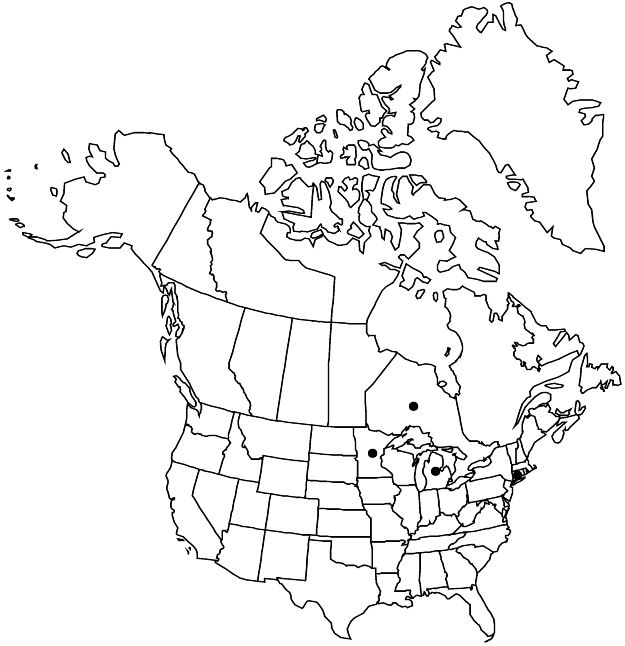Difference between revisions of "Potentilla verna"
Sp. Pl. 1: 498. 1753.
FNA>Volume Importer |
imported>Volume Importer |
||
| Line 32: | Line 32: | ||
|elevation=0–200 m | |elevation=0–200 m | ||
|distribution=Ont.;Conn.;Mich.;Minn.;Europe. | |distribution=Ont.;Conn.;Mich.;Minn.;Europe. | ||
| + | |introduced=true | ||
|discussion=<p>The use of the name <i>Potentilla verna</i> here reflects the successful proposal by J. Soják (2009) to conserve <i>P. verna</i> with a conserved type. Alternatives in recent use include P. neumanniana Reichenbach (misapplied) and P. tabernaemontani. The species has an established horticultural presence, primarily as a ground cover, and is to be expected in North America beyond where reported here.</p> | |discussion=<p>The use of the name <i>Potentilla verna</i> here reflects the successful proposal by J. Soják (2009) to conserve <i>P. verna</i> with a conserved type. Alternatives in recent use include P. neumanniana Reichenbach (misapplied) and P. tabernaemontani. The species has an established horticultural presence, primarily as a ground cover, and is to be expected in North America beyond where reported here.</p> | ||
|tables= | |tables= | ||
| Line 56: | Line 57: | ||
|publication year=1753 | |publication year=1753 | ||
|special status=Introduced | |special status=Introduced | ||
| − | |source xml=https:// | + | |source xml=https://bibilujan@bitbucket.org/aafc-mbb/fna-data-curation.git/src/bb6b7e3a7de7d3b7888a1ad48c7fd8f5c722d8d6/coarse_grained_fna_xml/V9/V9_284.xml |
|subfamily=Rosaceae subfam. Rosoideae | |subfamily=Rosaceae subfam. Rosoideae | ||
|tribe=Rosaceae tribe Potentilleae | |tribe=Rosaceae tribe Potentilleae | ||
Revision as of 00:27, 28 May 2020
Plants openly matted; caudex branches elongate, slender, sometimes rooting at nodes. Stems prostrate to decumbent, rarely weakly erect, 0.3–1.5 dm, lengths 1–2(–3) times basal leaves. Basal leaves not in ranks, palmate, 2–5(–10) cm; stipules: apex acuminate to acute, rarely obtuse; petiole 1–6 cm, long hairs common, ascending to appressed, 1–2.5 mm, weak to ± stiff, glands absent or sparse; leaflets 5–7, central oblanceolate to obovate, (0.8–)1–3 × 0.4–1.5 cm, petiolule 0–2 mm, margins flat, not lobed, distal 1/4–1/2(–2/3) evenly incised ± 1/3 to midvein, teeth 2–4(–5) per side, surfaces similar, green, hairs absent especially adaxially or sparse, 0.5–1.5(–2) mm, glands absent or sparse. Inflorescences 3–5(–6)-flowered. Pedicels often recurved, 1–3(–4) cm, not much longer in fruit than in flower. Flowers: epicalyx bractlets lanceolate, 3.5–5 × 1–1.5 mm, margins flat; hypanthium 2–4 mm diam.; sepals 3–5 mm, apex broadly acute to obtuse; petals yellow, 5–8(–10) × 4–6 mm; filaments 0.8–2 mm, anthers 0.5–0.8 mm; carpels 40–60, styles ± columnar, not papillate-swollen proximally, 1 mm. Achenes 1.5–2 mm. 2n = 28, 35, 42, 49, 56, 63, 70, 84 (Europe).
Phenology: Flowering spring–early summer.
Habitat: Dry roadsides and lawns
Elevation: 0–200 m
Distribution

Introduced; Ont., Conn., Mich., Minn., Europe.
Discussion
The use of the name Potentilla verna here reflects the successful proposal by J. Soják (2009) to conserve P. verna with a conserved type. Alternatives in recent use include P. neumanniana Reichenbach (misapplied) and P. tabernaemontani. The species has an established horticultural presence, primarily as a ground cover, and is to be expected in North America beyond where reported here.
Selected References
None.